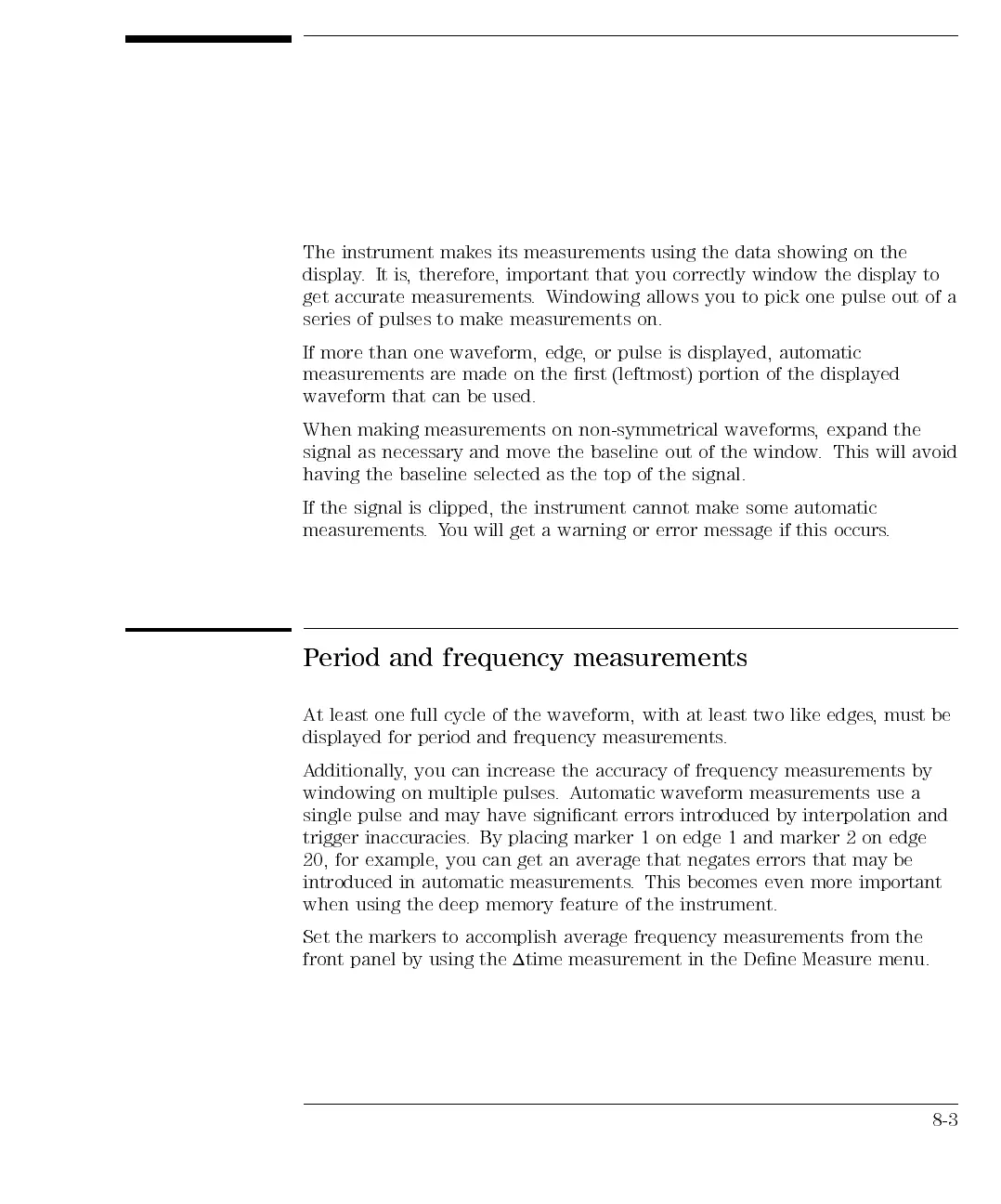The instrument makes its measurements using the data showing on the
display.Itis, therefore, important that you correctly window the display to
get accurate measurements. Windowing allows you to pick one pulse out of a
series of pulses to make measurements on.
If more than one waveform, edge, or pulse is displayed, automatic
measurements are made on the rst (leftmost) portion of the displayed
waveform that can be used.
When making
measurements on
non-symmetrical waveforms
,
expand
the
signal as
necessary and
move the
baseline out
of
the
window
.
This
will
avoid
having
the
baseline
selected
as
the
top
of
the signal.
If
the
signal
is
clipped,
the
instrument
cannot
make
some
automatic
measurements
.
Y
ou
will
get
a
warning
or
error
message if
this occurs
.
P
eriod
and
frequency
measurements
At
least
one
full
cycle
of
the
waveform,
with
at
least
two
like
edges
,
must be
displayed
for
period
and
frequency
measurements
.
Additionally, you can increase the accuracy of frequency measurements by
windowing on multiple pulses.Automatic waveform measurements use a
single pulse and may have signicant errors introduced by interpolation and
trigger inaccuracies. By placing marker 1 on edge 1 and marker 2 on edge
20, for example, you can get an average that negates errors that may be
introduced
in
automatic
measurements
.
This
becomes
even
more
important
when
using
the
deep
memory
feature
of
the
instrument.
Set
the
markers
to
accomplish
average frequency
measurements
from
the
front panel by using the 1time
measurement in the Dene Measure menu.
8-3

